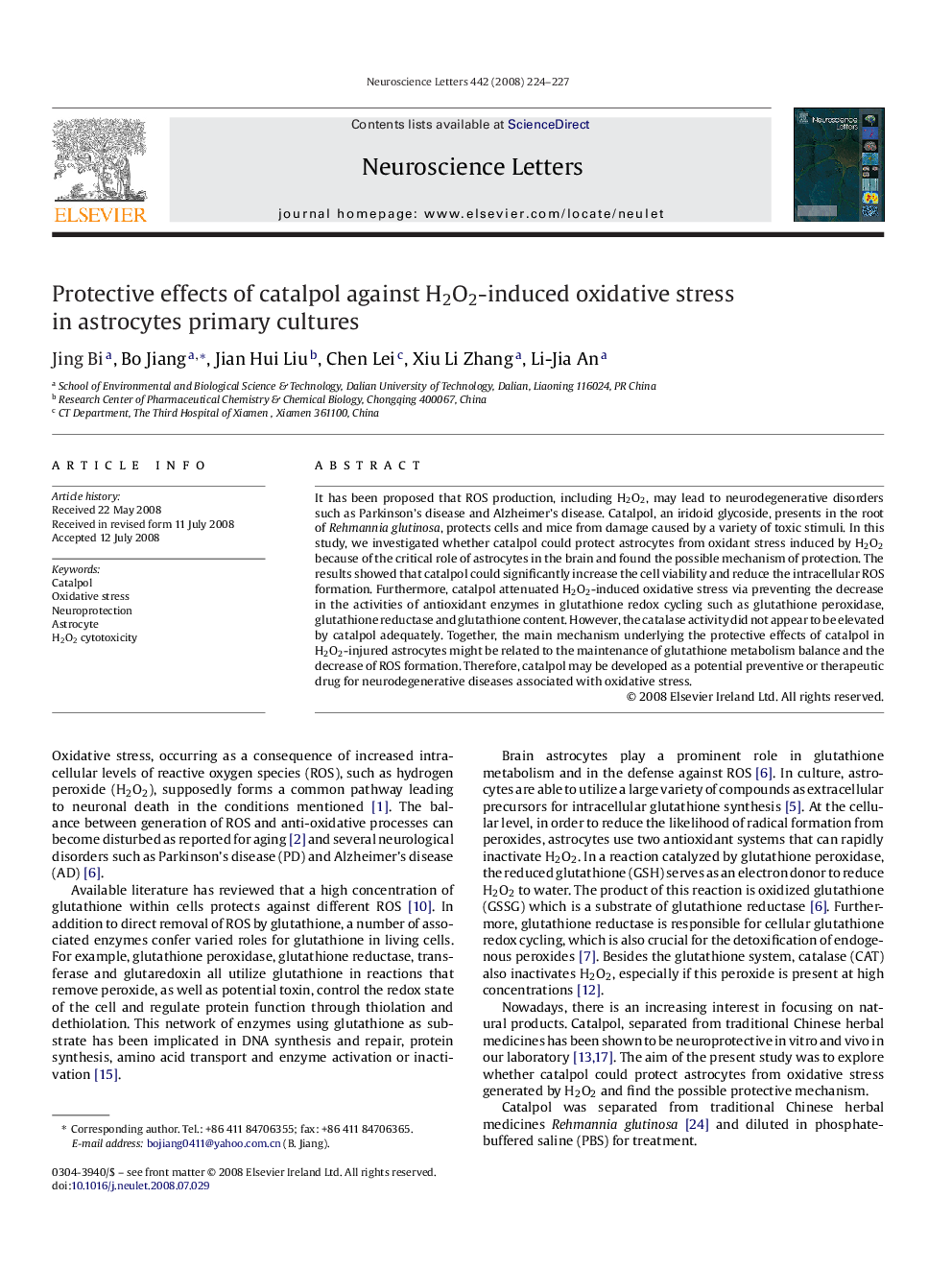| کد مقاله | کد نشریه | سال انتشار | مقاله انگلیسی | نسخه تمام متن |
|---|---|---|---|---|
| 4348237 | 1296882 | 2008 | 4 صفحه PDF | دانلود رایگان |

It has been proposed that ROS production, including H2O2, may lead to neurodegenerative disorders such as Parkinson's disease and Alzheimer's disease. Catalpol, an iridoid glycoside, presents in the root of Rehmannia glutinosa, protects cells and mice from damage caused by a variety of toxic stimuli. In this study, we investigated whether catalpol could protect astrocytes from oxidant stress induced by H2O2 because of the critical role of astrocytes in the brain and found the possible mechanism of protection. The results showed that catalpol could significantly increase the cell viability and reduce the intracellular ROS formation. Furthermore, catalpol attenuated H2O2-induced oxidative stress via preventing the decrease in the activities of antioxidant enzymes in glutathione redox cycling such as glutathione peroxidase, glutathione reductase and glutathione content. However, the catalase activity did not appear to be elevated by catalpol adequately. Together, the main mechanism underlying the protective effects of catalpol in H2O2-injured astrocytes might be related to the maintenance of glutathione metabolism balance and the decrease of ROS formation. Therefore, catalpol may be developed as a potential preventive or therapeutic drug for neurodegenerative diseases associated with oxidative stress.
Journal: Neuroscience Letters - Volume 442, Issue 3, 19 September 2008, Pages 224–227